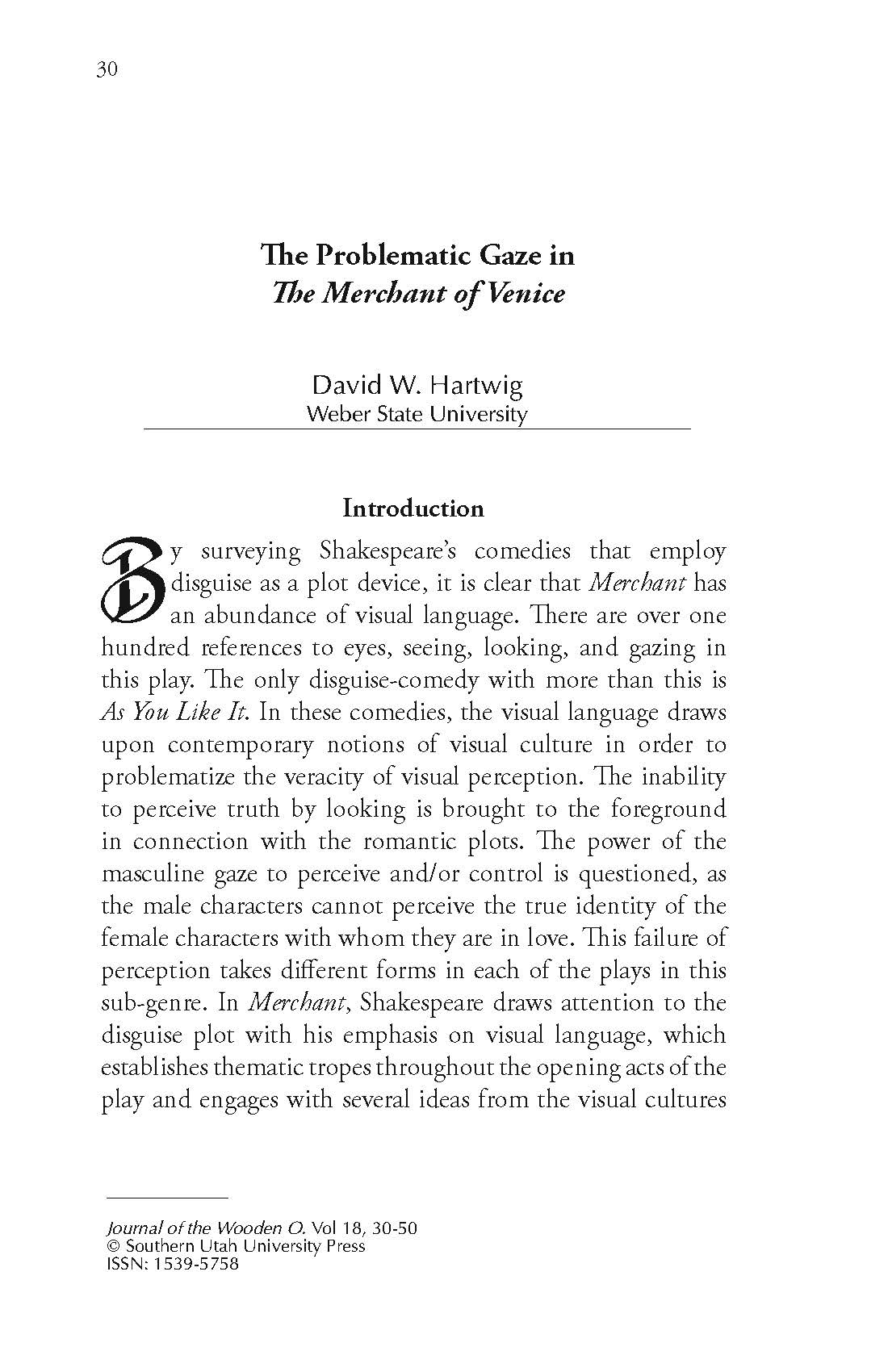The Problematic Gaze in The Merchant of Venice
Main Article Content
Abstract
By surveying Shakespeare’s comedies that employ disguise as a plot device, it is clear that Merchant has an abundance of visual language. There are over one hundred references to eyes, seeing, looking, and gazing in this play. The only disguise-comedy with more than this is As You Like It. In these comedies, the visual language draws upon contemporary notions of visual culture in order to problematize the veracity of visual perception. The inability to perceive truth by looking is brought to the foreground in connection with the romantic plots. The power of the masculine gaze to perceive and/or control is questioned, as the male characters cannot perceive the true identity of the female characters with whom they are in love. This failure of perception takes different forms in each of the plays in this sub-genre. In Merchant, Shakespeare draws attention to the disguise plot with his emphasis on visual language, which establishes thematic tropes throughout the opening acts of the play and engages with several ideas from the visual cultures
of his time. Merchant employs visual rhetoric in relation to the main romantic plot (Bassanio-Portia), in comedic scenes (Lancelot Gobbo and his father), in a secondary romantic plot (Lorenzo-Jessica), and in the dramatic climax of the trial. In all of these cases, Shakespeare emphasizes the various ways in which seeing is related to knowing, especially in relation to identity.
